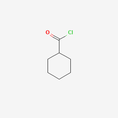Introduction
TMDS, short for 1,1,3,3 - Tetramethyldisiloxane, is an organosilicon compound with the molecular formula C₄H₁₄OSi₂. It appears as a clear, colorless liquid with a characteristic faint odor. This chemical is a significant intermediate in the realm of silicone chemistry, featuring a structure where two silicon atoms are connected by an oxygen atom, and each silicon atom is bonded to two methyl groups. Its unique molecular architecture gives rise to a set of distinct chemical and physical properties, making it a highly sought - after substance in various industrial sectors.
Advantages
High Reactivity
TMDS exhibits remarkable reactivity, enabling it to engage in a diverse array of chemical reactions under relatively mild conditions. This high reactivity translates into efficient and rapid synthesis processes, which can significantly reduce production time and energy consumption in industrial manufacturing.
Excellent Solubility
It has outstanding solubility in many common organic solvents. This property allows for seamless integration into different reaction systems, ensuring homogeneous reactions and consistent product quality.
Low Toxicity
Compared to numerous other chemicals used in industrial applications, TMDS has relatively low toxicity. This not only provides a safer working environment for employees but also aligns with the increasingly stringent environmental and safety regulations.
Structural Versatility
TMDS serves as a versatile building block for the synthesis of a wide range of silicone - based products. Its ability to participate in different chemical reactions allows for the creation of materials with diverse structures and tailored properties.
Applications
Silicone Polymer Production
TMDS is a fundamental raw material in the synthesis of silicone polymers. By incorporating TMDS into the polymer chain, manufacturers can precisely adjust the physical and chemical properties of the polymers, such as flexibility, heat resistance, and water - repellency. These polymers find extensive use in industries like automotive (for gaskets and seals), electronics (for encapsulation materials), and construction (for sealants).
Organic Synthesis
In organic chemistry, TMDS functions as a mild and selective reducing agent. It can be employed to reduce specific functional groups, such as carbonyl groups, in a controlled manner. This application is particularly valuable in the synthesis of pharmaceuticals, agrochemicals, and fine chemicals.
Surface Coating
TMDS can be used in surface coating applications. When applied to the surface of various substrates, it forms a thin, hydrophobic silicone layer. This layer enhances the water - repellency, anti - adhesion, and corrosion resistance of the materials, making it suitable for treating glass, metals, and plastics.
Solvent in Specialized Processes
Due to its good solubility and relatively low boiling point, TMDS can be utilized as a solvent in certain specialized chemical processes. It can dissolve a variety of organic and inorganic substances, and its volatility facilitates easy removal during the post - processing stage.
FAQ
Q1: What are the proper storage conditions for TMDS?
A1: TMDS should be stored in a cool, dry, and well - ventilated area. Keep it away from sources of ignition, heat, and direct sunlight. The container should be tightly sealed to prevent evaporation and contamination. It is advisable to store it separately from oxidizing agents, strong acids, and strong bases.
Q2: Is TMDS flammable?
A2: Yes, TMDS is flammable. It has a relatively low flash point. Therefore, appropriate fire - prevention measures, such as using explosion - proof equipment and following strict safety protocols, should be implemented during storage and handling.
Q3: Can TMDS be used in food - related applications?
A3: Generally, TMDS itself is not directly used in food - related applications. However, some silicone products derived from TMDS may be approved for food - contact use after passing rigorous safety evaluations and meeting relevant regulatory standards.
Q4: What is the shelf - life of TMDS?
A4: Under proper storage conditions, TMDS typically has a shelf - life of several years. However, its quality may gradually deteriorate over time, especially if exposed to adverse conditions such as high temperature, humidity, or air.
Q5: How should I handle a spill of TMDS?
A5: In the event of a spill, immediately evacuate the area to avoid inhalation of vapors. Wear appropriate personal protective equipment, including gloves and goggles. Use absorbent materials, such as sand or vermiculite, to soak up the spilled liquid. Transfer the absorbed material to a suitable waste container. Thoroughly wash the spill area with water and a mild detergent. For large spills, follow the emergency response procedures and contact the relevant environmental and safety authorities.
Hot Tags: tmds chemical, China tmds chemical manufacturers, suppliers, factory, pharmaceutical intermediate quality, pharmaceutical intermediate exporters, pure pharmaceutical intermediates, pharmaceutical intermediate promoters, pharmaceutical intermediate warehousing, pharmaceutical intermediate advertisers









